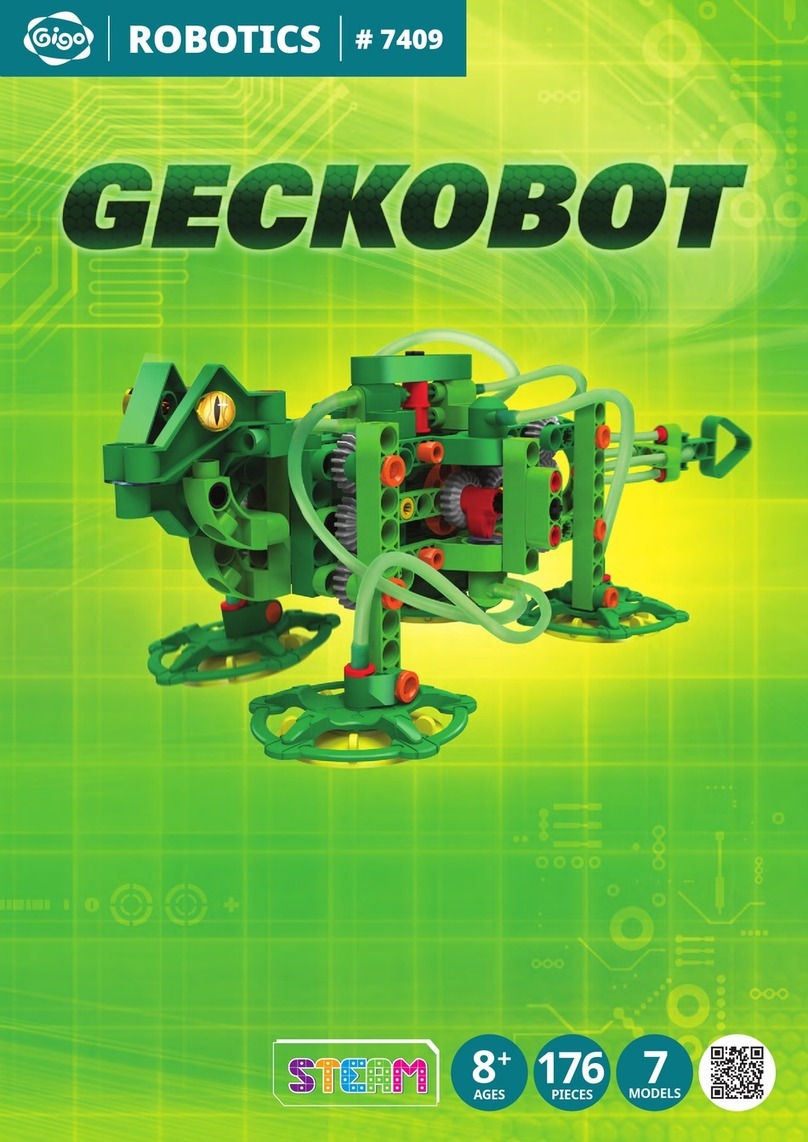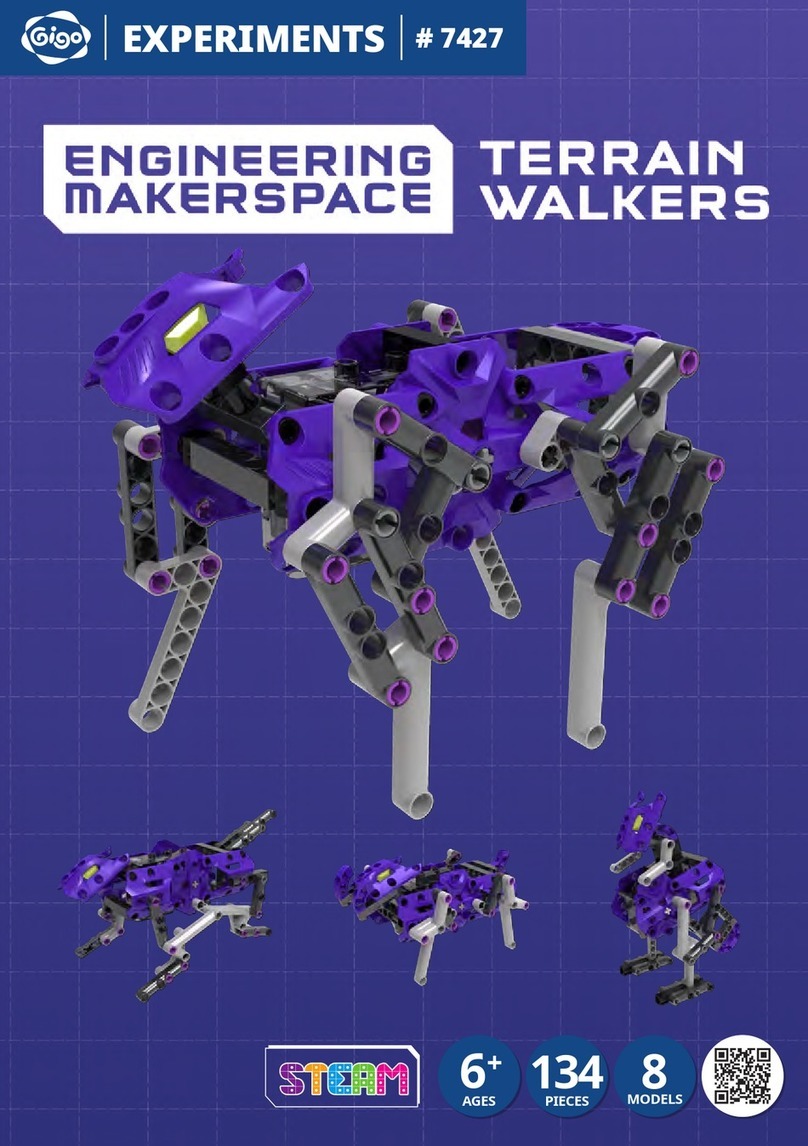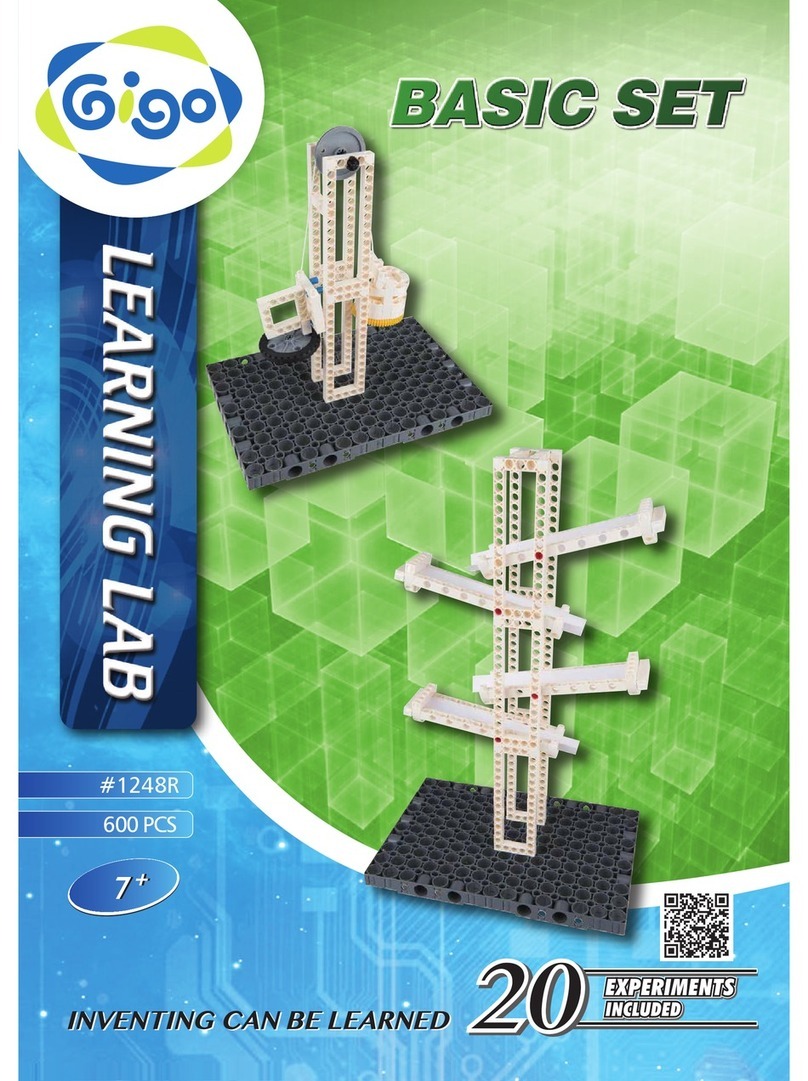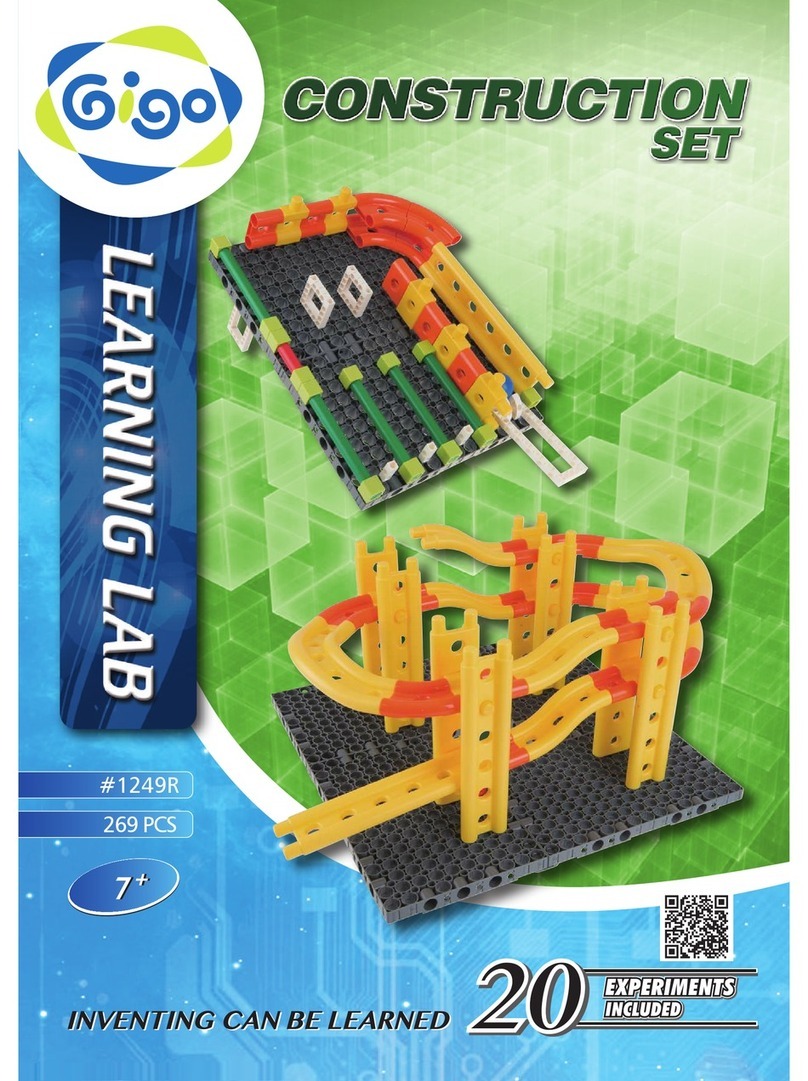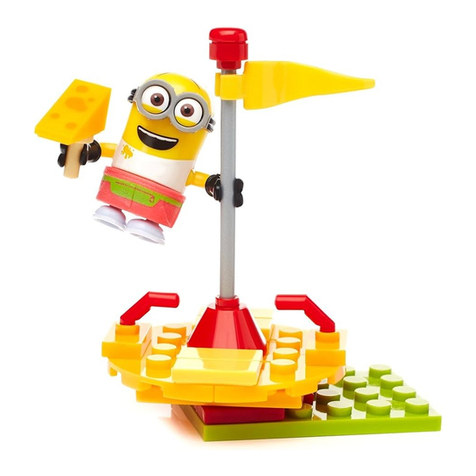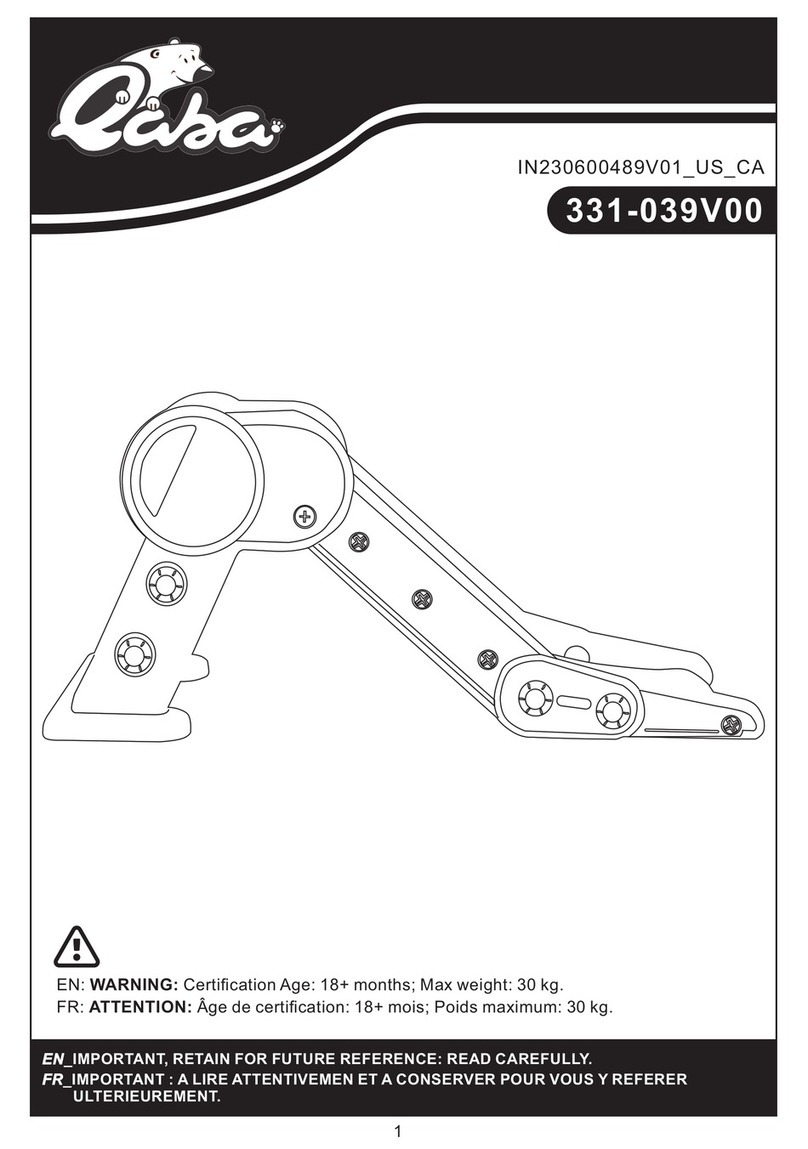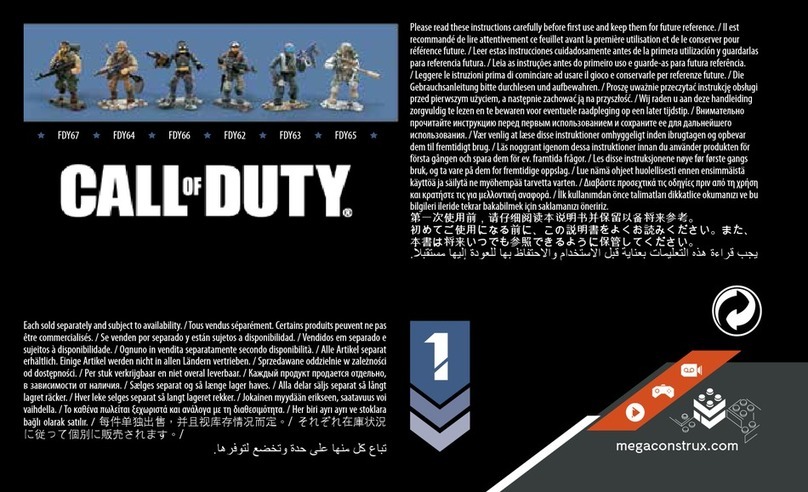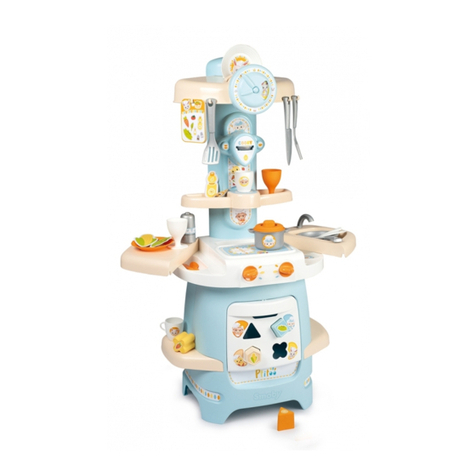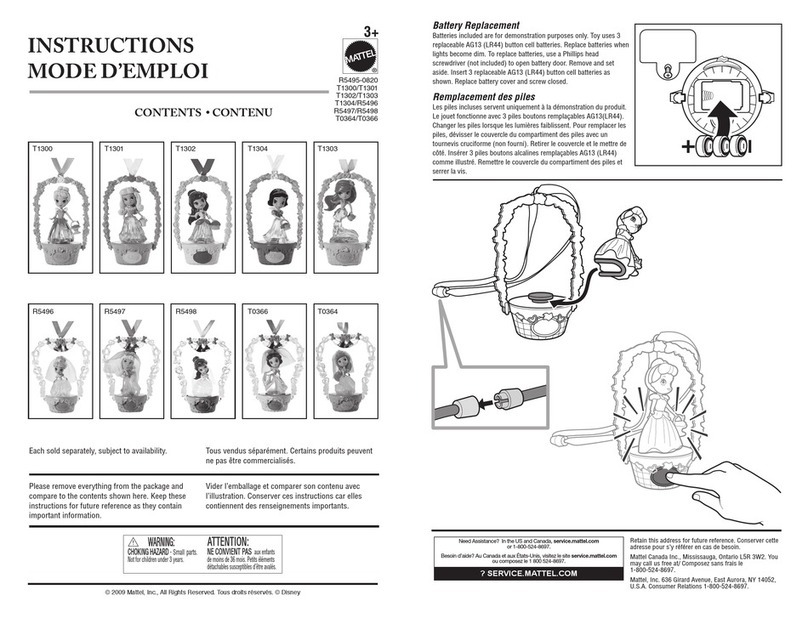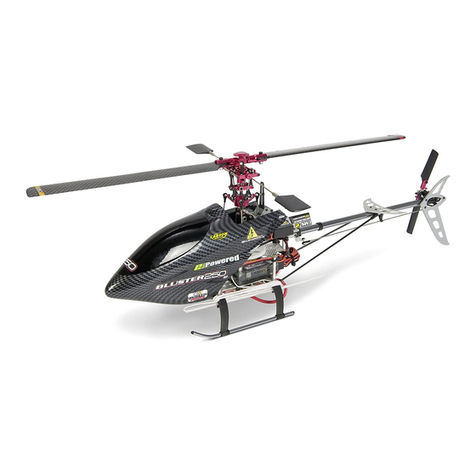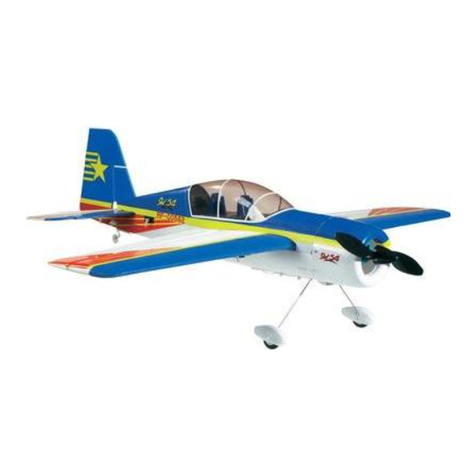Gigo EXPERIMENTS 7432 User manual

308
PIECES
8+
AGES 26
MODELS
# 7432
EXPERIMENTS

1
Table of Contents Table of Contents ................................................................ 1
Important Information and Assembly Tips .................... 2
Assembly Tips ...................................................................... 3
Kit Contents ......................................................................... 4
What Is Architectural Engineering?.................................. 5
Models of Basic Architectural Elements:
Square and Cylinder ..................................................................6
Rigid Polyhedron ...................................................................... 8
Forces and Loads ................................................................ 9
Two Types of Prism ................................................................. 10
Pentagons ................................................................................ 12
Triangles and Arch................................................................... 14
Form and Function ............................................................ 15
Arche and Shell ....................................................................... 16
Models of Buildings:
Wrought-Iron Tower ............................................................... 19
Catenary Arch ......................................................................... 23
Ferris Wheel ............................................................................ 25
29
Giant Dome ..............................................................................30
Olympic Stadium .................................................................... 32
Neo-Futuristic Skyscraper ..................................................... 36
......................................... 39
High-Tech Hotel ...................................................................... 40
Concrete Shell Performance Center ..................................... 43
........ 46
Engineering Design Challenges ........................................... 46
easy medium hard
TIP!
›››

2
Important Information & Assembly Tips
When you want to take your model apart again,
you will need the peg remover. Use the narrow
end of the lever to remove the pegs from rods
and exible rods.
Use the wide end of the lever (B side) to pry
pieces apart, as shown with the two-in-one
converter here.
You can also use the A side of the lever to push
pieces apart through holes, as shown with the
two-in-one converter here.
Warning! Not suitable for children under 3 years.
Choking hazard — small parts may be swallowed
or inhaled. Strangulation hazard — long flexible
rods may become wrapped around the neck.
Store the experiment material and assembled
models out of the reach of small children.
Keep packaging and instructions as they contain
important information.
Assembly Tips
Before starting the experiments, read through
the instruction manual together with your child
and discuss the safety information. Check to make
sure the models have been assembled correctly.
Assist your child with the experiments, especially
with reading the assembly diagrams and putting
pieces together that may require more dexterity or
hand strength than the child currently possesses.
Take a careful look at the dierent assembly
components. The small pieces, especially the two
dierent lengths of gray pegs can all look pretty
similar at rst glance. When you assemble the models,
it’s important to use the right ones.
The exible rods are a key feature of this engineering
kit. There are two lengths: 5-hole and 7-hole. They can
be twisted and bent into many dierent shapes.
You can connect the exible rods together end to
end with the two-in-one converters to make longer
lengths. It’s easier to do this if you lay the rods on a
at surface and press the two-in-one converter down
into the holes.
Do not fold the exible rods and crease the folds. They
will be permanently deformed if they are bent too
much. Do not remove the pegs by twisting or pulling
the exible rods.
The angle between the two pegs on the half hexagon
connector is 120°. With three of these and three
rods of the same length, you can make an isosceles
triangle. See the next page for tips on resetting deformed
flexible rods and adjusting the flexible rods to
look perfect in the models.
There are two types of new “FLEXIBLE ROD” : 5 holes and 7 holes, which own both
rigid and flexible characteristics.
120°
The “FLEXIBLE ROD” can become any shape like O shape, C
shape or U shape.
Do not bend the “FLEXIBLE ROD” excessively.
A side
B side
A side

3
Assembly Tips
If your exible rods are deformed, warped,
or bent after use, it is possible to straighten
them out again. Simply place the pieces in
hot water (120–140 °F / 50–60 °C) and wait
for 15 minutes. The plastic will reset itself.
You can also atten out the pieces on a
tabletop after removing them from the hot
water. Don’t use water hotter than 158 °F (70
°C), or the pieces will melt.
As a nal step when building the models, you can make small adjustments to the parts to align the
connections and smooth out the curves in the exible rods. The exible rods are malleable, so you
can form them somewhat with your hands to get them into exactly the right positions. Here is an
example of the renements for the wrought-iron tower model.
If the “FLEXIBLE ROD” is deformed after used, it is possible to repair the form by
dipping the piece in hot water at 50-60℃ for 15 minutes.
*The maximum heat resistant is 70℃.
*If the form is not repaired completely or not flat enough, please adjust it with your hands.
Adjust the “FLEXIBLE ROD”, PEG or CONVERTER to make the model more smooth
and vivid. Take model 26 as an example:
*Inspire your creativity, sense of beauty, and patience while building your own great master piece.
Adjust the curve of the
exible rod to match
the red line.
Make sure the
parts are aligned
horizontally.
Adjust the angle of
the connections to
keep the exible rods
horizontally aligned.
Adjust the angle of the top
and bottom connections
to make the structure
smoother.
Adjust the curves of the
exible rod to match the
red lines.
Adjust the curves of the
exible rod to match the
red lines.
Place in hot water
(120–140 °F)
Wait for 15 minutes.

4
NO. Description QTY. Item No.
1B-SHORT PEG 50 7344-W10-C2S
2C-LONG PEG 10 7061-W10-C1S
3C-TWO-IN-ONE CONVERTER 50 7061-W10-G1W
4C-1 HOLE CONNECTOR 12 7430-W10-B1W
5C-FRONT CONVERTER 2 7061-W10-Y1W
6C-SHORT BUTTON FIXER 24 7061-W10-W1W
7C-BENDED ROD 4 7061-W10-V1W
8C-3 HOLE ROUND ROD 6 7404-W10-C1W
9C-2 HALF HEXAGON CONNECTOR 24 7432-W10-B1W
10 C-5 HOLE ROD 16 7413-W10-K2W
11 C-5 HOLE PROLATE ROD 6 7443-W10-C1W
NO. Description QTY. Item No.
12 C-7 HOLE PROLATE ROD 6 7404-W10-C3W
13 C-9 HOLE ROD FRONT CLOSED 4 7407-W10-C2W
14 C-11 HOLE ROD 8 7413-W10-P1W
15 C-15 HOLE DUAL ROD 4 7413-W10-Z1W
16 OD8x20mm TUBE 12 7400-W10-G2W
17 C-70mm AXLE II 1 7061-W10-Q1D
18 C-6-PIN HUB CONNECTOR 1 7445-W10-A1S
19 C-5 HOLE FLEXIBLE ROD 32 7432-W10-A1W
20 C-7 HOLE FLEXIBLE ROD 32 7432-W10-A2W
21 B-PEG REMOVER 1 7061-W10-B1Y
22 P-DIE CUT CARD 3 K16#7432
3 4 5 6 7 8 9
10 11 12 13 14 15
16 17 18 19 20 21 22
1 2
Kit Contents

5
Architects and engineers use the word “design” to
describe what they do. Design is a sequence of steps that
are used to take an idea from concept to reality. The
engineering design process is iterative, meaning steps
can be repeated multiple times and then improvements
can be made each time, until the correct or optimal
outcome is achieved.
ENGINEERING
DESIGN PROCESS
IDENTIFY
NEEDS AND
CONSTRAINTS
DEVELOP
POSSIBLE
SOLUTIONS
BUILD A
PROTOTYPE
IMPROVE
DESIGN
TEST AND
EVALUATE
PROTOTYPE
Architecture is the art and science of designing buildings and spaces that
humans use. Engineering is the application of science and math to the
design, creation, and use of just about anything humans make. Architectural
engineering refers to the engineering aspects of architecture. An architectural
engineer uses engineering principles to design buildings.
Architects plan, design, and manage the construction of a building. The primary
focus of an architect is to design a building to meet the needs of the users or
occupants. Architectural engineers focus on the design of a building’s systems
including its structural systems; its heating, ventilation, and air conditioning (or
HVAC for short) systems; and its plumbing, re protection, electrical, and lighting
systems. Architectural engineers use new materials and technologies, like
computer modeling. They balance factors like cost, time, and quality to make
decisions. Architects work with architectural engineers to make their designs
become reality.
In this kit, you will learn about some of the design elements and structural
components of buildings with hands-on projects.
Engineering?
What Is
Architectural

6
EXPERIMENT
With the square
at on a table,
hold one corner
of the square in
one hand and try
to deform it by
moving the opposite
corner. Does the square deform? Also
try bending one corner of the square
upward from the table while holding the
other corner. Does it bend?
When you are pushing or pulling on the corner of the square,
you are applying a force, or to the structure. A goal
of architectural engineering is to achieve the stability of a
structure under different loads. All structures will change
shape to some degree when loads act on them. In a stable
structure, the changes in shape, or are small,
and forces within the structure return the structure to its
original shape after the load is removed.
In an unstable structure, the changes in shape are large
and usually increase as long as the forces are applied.
An unstable structure does not have the internal forces
required to restore the structure to its original shape. Is
the square a stable or unstable structure?
Not only is the structural shape unstable, but the exibility
of the plastic material itself makes it easy to bend.
EXPERIMENT
Repeat Experiment 1
with the braced square.
How does the braced
square react to the load?
By adding the two cross pieces and connecting the
two corners, you made the square model into a much
more stable structure. The cross pieces lock the angle
of the other rods. When you push on the corner of
the square, you can feel the model move a little bit.
As you stop pushing on it, you can feel it return
to its original shape. It’s also significantly more
resistant to bending. However, you used more
material to achieve this. That is called a in
engineering.
Architects need their buildings to be
structurally stable and to remain
standing despite the all the loads that
act on them. Let’s build some simple
models and conduct simple
experiments with them to show how
connecting structural elements
together in different ways can affect
the strength and stability of a structure.
1-4
Model
×2

7
1-4
Model
EXPERIMENT
Build the
cylinder and
then the braced
cylinder. Push
down on each
model with your
hand. What do
you notice?
When you added the braces,
you made the cylinder much
more resistant to deformation.
Even the flexible plastic rods
become more rigid when
connected like this. It’s partly
thanks to triangles. Continue
to the next page to find out
more.
Architects want to design buildings
in all sorts of different shapes and
sizes to meet the needs to the
inhabitants and users of the spaces
in them. Let’s try building a simple
three-dimensional volume — a
cylinder. And then, we’ll make it
more structurally stable by adding
braces to it.
×2
×2 ×4

8
5-6
Model
EXPERIMENT
Push inward on the model with your hands. Is
the model fairly rigid and stable?
A polyhedron is a three-dimensional shape
with many sides. Here, you made a six-sided
polyhedron out of the flexed triangles.
Because it is made up of triangles, this
shape is very rigid and hard to deform.
Triangles are often said to be the strongest
shapes. They are rigid and stable. This is
because a triangle simply cannot deform into
another shape as long as its sides don’t deform.
Triangles are therefore the basis of most rigid
structural frames. In this model, you can see
how when the flexible rods are flexed and
formed into a triangle, a strong shape results.
What happens
when you combine
many of these
exed triangles into
one 3D shape?
×4

9
Tension Compression Torsion Bending
Architectural engineers often use
five terms to describe how a load
can affect a structure: tension,
compression, shear, torsion, and
bending.
Tension is any force that pulls (or
stretches) an object apart.
Compression is any force that
pushes in on (or squeezes) an
object.
is a force that causes parallel
internal surfaces within an object
to slide past each other.
Torsion is a force that causes
the twisting of an object due to a
moment.
Bending force is a force that
causes an object to bend.
A force is an interaction between objects. You can
think of a force as a push or pull on an object that
changes the motion of that object. If the object
resists that motion, the object might deform — part
of the object might move relative to another part
of the object rather than the entire object moving.
Architectural engineers must analyze the forces acting
on buildings to make sure the buildings will stay
standing. Forces acting on a building are called loads.
Pull on the exible rod from both ends. It’s very strong
intension, isn’t it?
Now push both ends together. It’s not very rigid in
compression. It buckles when you push the ends
together. In terms of shear, it’s pretty resilient. And when
you subject it to torsion by twisting it, it twists.
Hold one end of the rod and push down on the middle.
The rod bends. One side of the rod is under tension and
the other side is under compression.
This is a special type of plastic that is designed to have
just the right amount of exibility for building the
models in this kit. These exible rods are used in the
models to mimic steel beams in real buildings.Like
plastic, steel is incredibly strong under tension but it isn’t
so great under compression. It will bend under too much
force, but it’s very hard to pull it apart from end to end.
Why aren’t more buildings built with plastic rods? Steel
and other metals are much more resistant to heat and
less likely to degrade under normal conditions. Steel is
stronger, harder, and more durable than plastic.
Plastic and Steel
Loads Acting on a Building
Architects must design buildings to withstand many
different types of loads that could pull them down
or push them over. Loads can be divided into two
categories: Dead loads and live loads.
include the weight of the building itself
and all the permanent things installed in the building.
Gravity pulls these loads downward.
include the weight of the people, furniture,
and other objects inside the building. The snow load
and rain load — the weight of the snow or water on the
roof — are also live loads.
Some live loads act laterally on the building, instead of
pulling downward. The wind load is caused by the wind
pushing on the side of the building. The groundwater
and earth around the building’s foundation push
laterally on it. And even the load from occasional
earthquakes must be considered when designing a
strong, stable building.
Wind
Load
Load
Water and
Earth Pressure
Lateral Loads

10
EXPERIMENT
Hold the top triangle in one hand
and the bottom triangle in the other.
Gently twist the prism by rotating the
triangles in opposite directions. Try
bending and compressing the prism.
What do you notice?
Prisms
You made two triangles into a prism. A prism is a 3D
geometric gure whose two end faces are similar, equal,
and parallel shapes, and whose sides are parallelograms
— in other words, sides formed with parallel lines.
The triangle prism is prone to twisting, bending, and
compressing. The triangles at the ends may be stable,
but the rectangles in the middle are not as strong.
Nevertheless, countless buildings are built using shapes
like this, and due to the strength of the materials they
are made of, they are strong enough to stay standing.
Now, let’s investigate form. Form is a
very commonly used word in
architecture — it basically just
means the shape and configuration
of a building. The opposite of form is
space. The space is the empty area
defined by the forms of a building.
Together, form and space make up
all buildings. Let’s build some forms.
Model
×2
×6

11
Model
EXPERIMENT
Test the square prism the same
way you tested the triangular
prism. What do you notice? Which
is more resistant to deformation?
More prisms
There are no triangles in the square prism at all. Therefore,
it can twist, bend, and deform more than the triangular
prism. However, you can see that even the square prism
is strong enough to stay standing on its own.
By combining the 12 exible rods into one structure, you
have created a threedimensional form with volume, or
space inside. It’s easy to imagine this prism shape as
the basis for countless buildings.
There are lots of
different types of
prisms. Let’s build
a square prism.
×8
×2

12
EXPERIMENT
Pressing down on one peg of the
pentagon, hold the shape by an peg
across from the rst and pull up. What
happens?
You made a flat pentagon. A pentagon is a shape
with ve sides. All ve rods are in the same plane. In
geometry, a plane is a at, two-dimensional surface
that extends innitely far. Three points always dene
a plane.
When you hold part of the pentagon down and
pull up on the other part, the pentagon bends and
no longer occupies a single plane. The warped
pentagon is now a curved sruface. Imagine all the
buildings that have curved surfaces like this!
×5
Pentagons
11-12
Model

13
EXPERIMENT
Place a stack of magazines, one by
one, on top of the dome. How many
magazines does the dome support
before it starts to deform?
You made a dome using the exible rods.
The dome is supported by ve arcs. An arc is part of the
circumference of a circle or other curve. By connecting
the arcs together at certain points, you have made
stable triangular shapes. Can you count all the
triangles in the model?
The model resembles a star dome, which is one of
the rst types of shelters built by humans. They were
built out of thin, exible tree trunks or branches.
Perform this step five times, attaching
the X shapes to each set of two gray pins
around the ring and the top of the dome.
Start with the flat pentagon from
the previous page. We will now
bend it to form it into a dome.
Pentagons 11-12
Model
×5
×5
×5

14
An arch is a curved structure that is
symmetrical on both sides and spans
an opening. It often supports a load on
top of it; e.g., a wall, bridge, or roof.
Triangles and Arch
13-15
Model
EXPERIMENT
Build the three shapes on this
page. All three use only three
rods, but each forms a different
shape. Push down on the top of
the arches. What happens?
Forces in the arch
When you push down on the top of the arch, the sides of
the arch bow outward. Imagine you had forces pushing
downward and inward along the entire length of the arch.
If the sides were prevented from being pushed outward,
then the top of the arch would be prevented from being
pushed downward. This is the principle behind why the
arch is such a strong structural shape, and why it is used in
so many buildings. The inner surface of an arch is under
compression. The arch channels forces down from the top
through the sides and down to the base.
×2

15
Form and Function
Architects design buildings and spaces for people to use.
From the simplest house to the most complex skyscraper,
buildings must serve the needs of the people who inhabit
them. In architecture, it is often said that “form follows
function.” This means that the form, or shape, of a building
and the spaces in and around it depends on what the
building is used for. In addition to the usefulness, architects
are also concerned with the durability and beauty of
buildings. If a building falls down or doesn’t protect the
inhabitants from the weather, it cannot fulll its function. The beauty of a building is perhaps the
hardest quality to dene. The way people feel when they look at a building or occupy a space is
an extremely important consideration of the architect. In this way, art is an important element of
architecture. In addition, the environmental impact of buildings is a growing concern today.
Elements of Architecture
People have been designing buildings and spaces for thousands of years. Over the years, the eld
of architecture has developed and with it, a wealth of know-how, terminology, and technology all
related to the design and construction of buildings. Just like writers must understand letters and
words before they can write books, architects must understand the basic elements of architecture
before they can design complex buildings. Here are some examples of the elements of architecture:
The Materials Matter
While architects may be primarily concerned with a building’s form and function for the users, the
architectural engineer’s primary concerns might center around getting the building’s systems to
support its form and uses: Does the building’s structure support the weight of its inhabitants? Does the
building have light, heat, electricity, and water in all the necessary places?
How do modern-day architectural engineers achieve the amazingly tall skyscrapers and fascistically
shaped buildings that architects design? Largely the answer lies in the materials they use. Three of the
most critical materials used in building today are steel and concrete.
Steel is a metal that is an alloy, or
mixture, of iron and carbon. It is a
common building material due to its
high tensile strength and low cost.
When you combine the high
tensile strength of steel bars and
the high compressive strength
of concrete, you get another
common building material called
reinforced concrete that is strong
in both tension and compression.
Concrete is a composite material
made of ne and coarse aggregate,
like sand and gravel, bonded together
with a liquid cement that hardens
over time. Because of its high strength
in compression and low cost, it is a
common building material.
Open gable Shed Saltbox Flat M shaped
Dormer Hip and valley Gambrel
Pyramid hip Butterfly Lean-to Mansard Dutch gable
Box gable Clerestory
Cube Square pyramid Cylinder Sphere Hemisphere Hexagonal
prism
Cone Half cylinder
ShoulderedHorseshoeSegmentalLancetRound Trefoil Convex Tudor Ogee Tented Parabolic Moorish
multifoil
Elements of Form
Types of Arches
+ =

16
16-18
Model
EXPERIMENT
Look at the model you built. Can
you nd two arches in the model?
Look closely at the shape of the
arches. What shape do they have?
Push down on the dome. What
happens?
Arches and domes
In this experiment, you can see how a dome is like a
combination of multiple arches. You built a structure with
two arches in dierent planes. The arches are called concave
arches or reverse ogee arches based on their shape.
These two arches dene a three-dimensional space. This is
not a common shape for a dome. You can see why when
you push down on it: The dome bows inward. Ogee arches
are not the strongest arches. The combination of convex
and concave curves makes them rather weak structurally.
They are more often used decoratively in buildings.
Parts Needed
3 8
14 20
1
x 2 x 5
x 4 x 4
x 1
Arches are great, but
sometimes you want to
enclose more space
under a roof. Imagine
rotating an arch around
its top point to define a
three-dimensional space
— that’s a dome!

17
Parts Needed
20
1
x 5 x 2
x 6 x 1
x 1
16-18
Model
5 9 10
16 19
x 2
x 3
Imagine a curved surface covering the outside of
this model. In architecture, a shell is a structural
element that is dened by its shape. It is a curved
three-dimensional shape that is very thin in one
dimension compared to the other two dimensions.
A shell is a curved plate. A plate is another
architectural element dened by its shape. Like a
shell, it is a three-dimensional shape that is very
thin in one dimension compared to the others.
The dierence is that it is at, not curved. The
surface of the plate is in one plane.
Now let’s build another
type of modern structural
element: the shell.
Keep aligned
Keep aligned
Keep aligned

18
EXPERIMENT
When you bend
the top of the arch
in step 5, what
happens?
Tension
16-18
Model
OK
The five 5 hole rods splay outward. They get
farther apart from one another. In this way,
you can see how the outer surface of the arch
is being pulled apart — it is under tension.
But the inside of the arch is being pushed
together. It is under compression.
By the way, this classic semicircular arch shape
is known as a Roman arch. It’s semicircular
shape makes it very strong. It was widely used
in ancient Roman architecture.
Now that you’ve built
many of the basic
structural elements of
architecture, let’s move
on to build some larger
and more challenging
models of buildings
that use the principles
and elements you have
just explored, starting
with this iconic tower!
Let’s build one more
arch shape to
investigate tension
and compression.
Parts Needed
3
14
1
x 16 x 6
x 4 x 4
x 2
10 11
13 19
x 5
x 4
×2
×2

19
19
Model
Parts Needed
31
x 26 x 47
x 25
x 16
10
19
x 1
9
x 8
20
x 29
7
17
4
x 8 x 4
M26
2 x2
3 x4
Note: Steps 1 and 2 are slightly different!
In architecture, a plan
is a diagram of a
building shown from
above, looking down
on the building. A
plan diagram shows
everything below a
certain cross-section
sliced horizontally
through the building.
Plan
Plan
×4
×2
×2
×4
Table of contents
Other Gigo Toy manuals
Popular Toy manuals by other brands

Bengtson Company
Bengtson Company HALBERSTADT DIII instructions

Black Horse Model
Black Horse Model BEDE BD-5J Instruction manual book
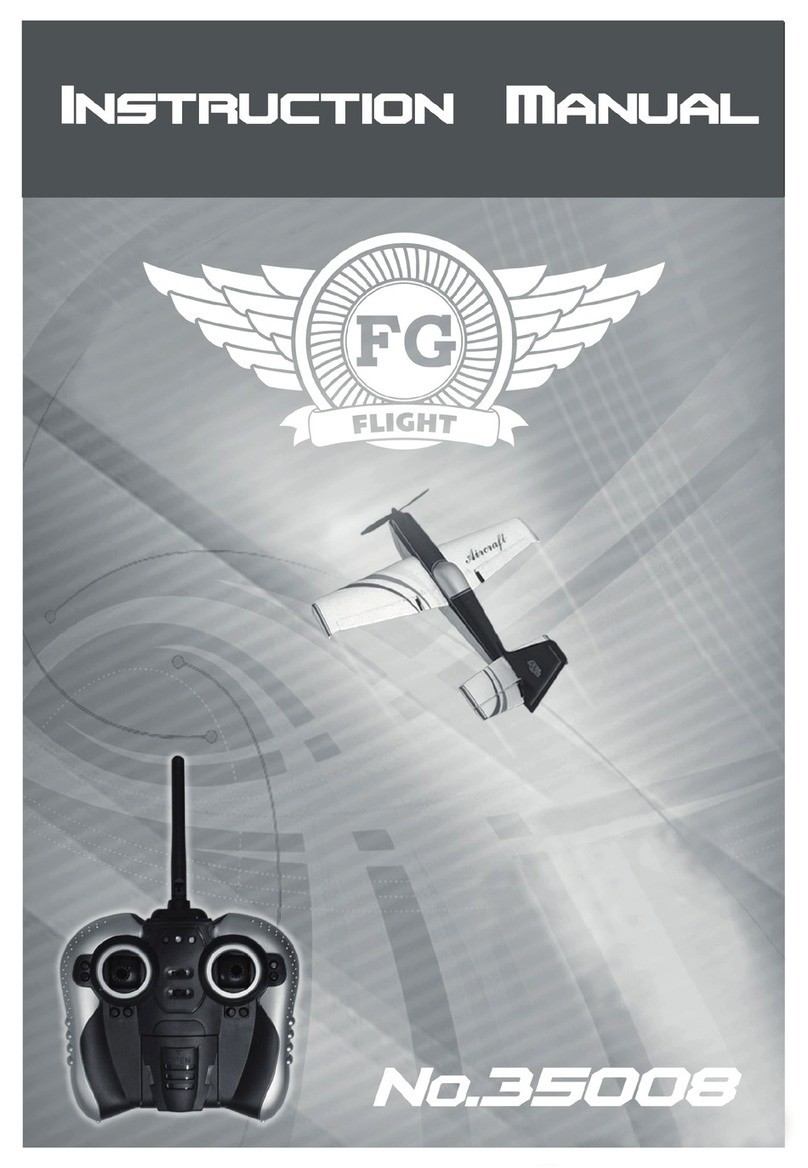
Flying Gadgets
Flying Gadgets 35008 instruction manual
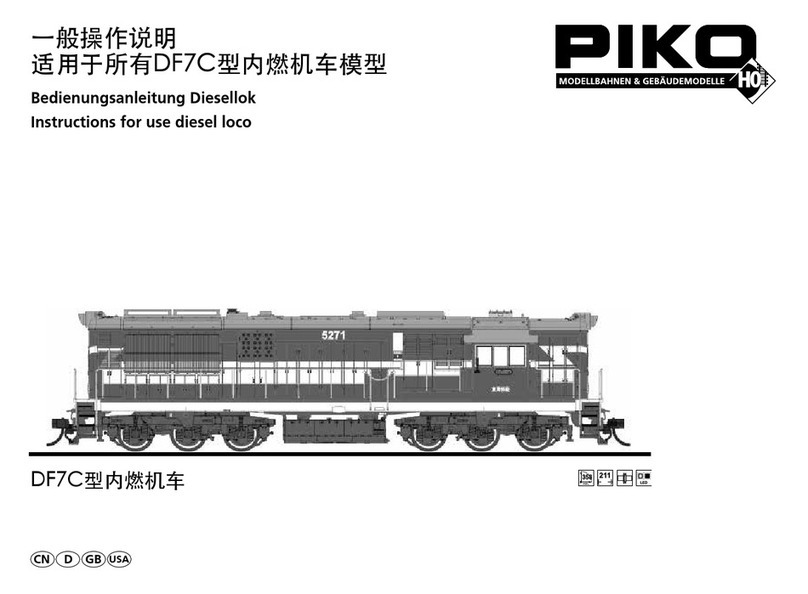
PIKO
PIKO 56301 Instructions for use
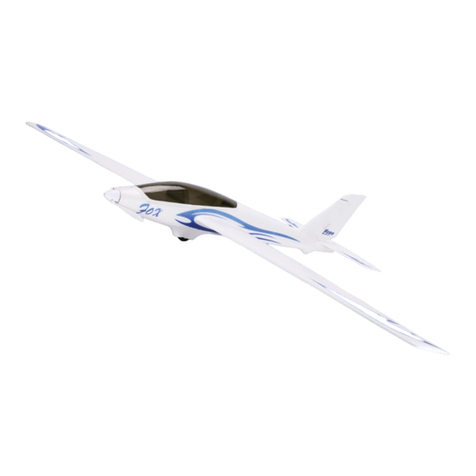
HYPE
HYPE FOX instruction manual
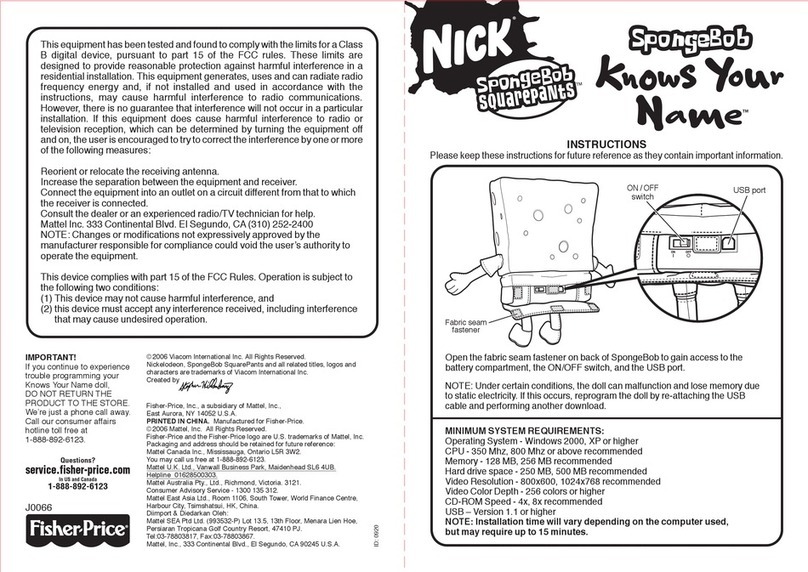
Fisher-Price
Fisher-Price SpongeBob Knows Your Name instructions
